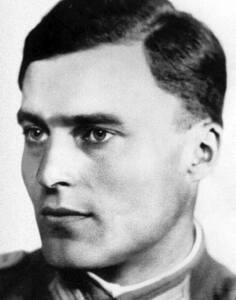Operation Valkyrie

Prior to Operation Valkyrie in 1944, officers spent two years plotting the final assassination attempt of Adolf Hitler. Several members of the German government believed that Hitler was destroying Germany and realized their only hope of not being obliterated by the Allied Powers was to remove him from power. By 1944 there had already been several botched attempts on Hitler’s life. This attempt would require a whole new plan, because as the war was going on Hitler almost never visited Germany, and his security team was on high alert because of other failed efforts.
The plot’s main conspirators included Claus von Stauffenberg, Wilhelm Canaris, Carl Goerdeler, Julius Leber, Ulrich Hassell, Hans Oster, Peter von Wartenburg, Henning von Tresckow, Friedrich Olbricht, Werner von Haeften, Fabian Schlabrendorft, Ludwig Beck and Erwin von Witzleben; all of them were either members of the military or bureaucratic government. Their plan revolved around a revised version of Operation Valkyrie (Unternehmen Walküre) in order to gain control of the nation and be able to make peace with the Allies before they invaded Germany. This operation, approved by Hitler himself, was to be used if there was a break down in law and order or communications between different parts of the government due to an uprising or attack. In the modified version, the initiating factor would be the death of Hitler along with some of his key advisors with suspicions falling on the more fanatical branches of government, forcing the Reserve Army, under the direction of General Friedrich Fromm, to take control of the government. These troops would then seize important buildings and communication stations in Berlin so that the conspirators could gain and reorganize the German government. This is why the plan was to assassinate not only Hitler but also Heinrich Himmler, since as the head of the SS he was Hitler’s probable successor. Himmler would probably be just as bad if not worse than Hitler himself. Another issue arose in Fromm; he was the only other person besides Hitler who could put Operation Valkyrie into effect, so if he did not join the conspirators, the plan would quickly fall apart once it was put into action.
On July 20, 1944, after several aborted attempts, Von Stauffenberg flew out to Hitler’s bunker in East Prussia, called the Wolf’s Lair, to attend a military conference. Once he arrived, he excused himself to the bathroom, where he initiated the timer on the bomb he had been carrying in his briefcase; this would give him ten minutes to evacuate the building before it detonated. He returned to the conference room, where Hitler was present among more than 20 other officers. Von Stauffenberg placed the briefcase under the table, then left to take a planned phone call. After minutes had passed, he heard an explosion and saw smoke coming from the conference room, leaving him to believe that the plan was successful. He quickly left the Wolf’s Lair to fly back to Berlin so he could play his role in the reformation of the government.
However, Von Stauffenberg was mistaken. Of the four casualties, Hitler was not one, and the conflicting reports on whether he was dead or alive made those in Berlin stall in initiating Operation Valkyrie. This led to several hours of confusion and conflicting reports from both sides until Hitler, only being slightly injured, had recuperated enough to call several officers themselves to inform them of his survival. Fromm, in hopes to quell any suspicions of himself, immediately ordered the executions of Von Staffenberg and three other of his conspirators. They were executed by firing squad in the early morning hours of the July 21. Around 7,000 more people would be arrested for activities related to the July 20 plot, with around 4,980 executed for their crimes, including Fromm.
There are many theories as to why the explosion didn’t kill Hitler. The two most significant factors involve the leg of the conference table and the conference room itself. Von Stauffenberg had placed the briefcase containing the bomb on the side of the table leg closest to Hitler, but accounts have shown it had been moved from its original position, sending the magnitude of the blast away from Hitler. The second factor was the meeting location. If the conference had taken place in one of the enclosed rooms inside the bunker, as some sources say it was supposed to be, then the blast would have been more contained and more likely to have killed the intended targets. But, as it took place in one of the outdoor conference buildings, the explosion’s magnitude was less concentrated.
While the failure of this attempt was a blow to all who opposed Hitler’s reign, it did symbolize the weakening of the German government and the start of the Allied victory.
In 2008, the film Valkyrie starring Tom Cruise, depicted the July 20th assassination attempt and the failed execution of Operation Valkyrie.
Back to International Crimes
Back to Crime Library

